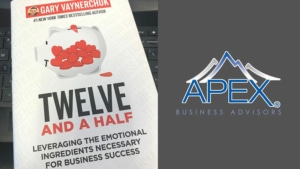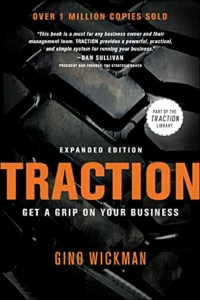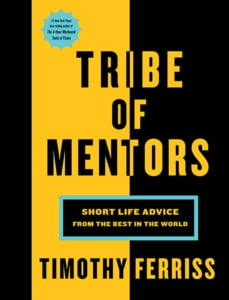Book Club #28: Twelve and a Half, by Gary Vaynerchuk
 Not too long ago we reviewed Gary Vee’s Crushing It!, which is all about helping business owners understand how social media can help them win in the ever-digitizing world of business. His newest book, Twelve and a Half: Leveraging the Emotional Ingredients Necessary for Success, is another in his series of business books that are unlike anything else in the marketplace. While perfect for business owners, it’s also a great gift for recent high school or college graduates.
Not too long ago we reviewed Gary Vee’s Crushing It!, which is all about helping business owners understand how social media can help them win in the ever-digitizing world of business. His newest book, Twelve and a Half: Leveraging the Emotional Ingredients Necessary for Success, is another in his series of business books that are unlike anything else in the marketplace. While perfect for business owners, it’s also a great gift for recent high school or college graduates.
For Business Owners
In Part I of the book Gary offers the dictionary definition of twelve traits he feels strong in, as well as one “half” trait (kind candor) that he feels he continues to develop in. These chapters are short but consistently reference Gary’s own life experience and why he thinks proper and consistent deployment of these “emotional ingredients” (as he refers to them) leads to success in business.
For the record the twelve ingredients are:
- Gratitude
- Self-awareness
- Accountability
- Optimism
- Empathy
- Kindness
- Tenacity
- Curiosity
- Patience
- Conviction
- Humility
- Ambition
It might be jarring to see humility and ambition side-by-side, but Gary resolves this by saying:
“I love talking about my ambition publicly, in front of the world, because it holds me accountable. Doing so also gives the whole world permission to laugh at me if I fail.”
At the end of his chapter on patience, Gary notes:
“Almost every time I put out content about patience, a stunning amount of the comments say, ‘Easier said than done.’ I want to remind you, as you uncover your halves, that all great things should be hard.”
For Grads (to Discuss with Business Owners)
Part II of the book is full of examples in which deploying an ingredient makes all the difference. Here’s one of them:
When your manager or client gives you unexpected negative feedback, how you deliver the following line determines what will happen next:
“Hey, Olivia, can you give me more clarity on your feedback?”
I want you to read that line out loud…the emotional ingredients you deploy in this situation can change your tone of questioning and potentially the outcome of this meeting.
The importance of tone in a textual exchange will not be lost on a recent graduate, but imagine how much more powerful the example can be if it were posed to a relative or family friend, “Have you ever run into a situation like this?” Now, instead of only having Gary Vee’s example, the recent grad will have the feedback and example of someone close to him/her.
The book is chock-full of scenarios worth considering.
The third and final part of the book has challenges related to the twelve and a half ingredients, some of which call for vulnerable sharing on social media, which is probably not for the faint of heart, but still worth considering. While business owners may be used to getting out of their comfort zones regularly, graduates may not be, and this book provides the opportunity and nudge to do just that.
Did you enjoy this review? We’ve got dozens more for you to check out.

 Let’s face it, a lot of business books are pretty boring and can be a lot shorter. Part of why we have this book club series of articles is to steer you away from those (
Let’s face it, a lot of business books are pretty boring and can be a lot shorter. Part of why we have this book club series of articles is to steer you away from those (

 While the book title,
While the book title,  Dan points out that many people agonize over the “perfect” name for their business. Instead, he has six questions that get to the heart of what matters: a name that works.
Dan points out that many people agonize over the “perfect” name for their business. Instead, he has six questions that get to the heart of what matters: a name that works.
 Negotiations aren’t just integral to business transactions, they are part of our everyday lives. As Chris Voss notes in his excellent book
Negotiations aren’t just integral to business transactions, they are part of our everyday lives. As Chris Voss notes in his excellent book 
 The subtitle of
The subtitle of  Many business books offer solutions or systems or case studies to make their point. Very few offer a simple narrative with lessons gleaned on the journey.
Many business books offer solutions or systems or case studies to make their point. Very few offer a simple narrative with lessons gleaned on the journey. 